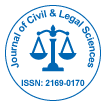Notre groupe organise plus de 3 000 séries de conférences Événements chaque année aux États-Unis, en Europe et en Europe. Asie avec le soutien de 1 000 autres Sociétés scientifiques et publie plus de 700 Open Access Revues qui contiennent plus de 50 000 personnalités éminentes, des scientifiques réputés en tant que membres du comité de rédaction.
Les revues en libre accès gagnent plus de lecteurs et de citations
700 revues et 15 000 000 de lecteurs Chaque revue attire plus de 25 000 lecteurs
Indexé dans
- Index Copernic
- Google Scholar
- Sherpa Roméo
- Ouvrir la porte J
- JournalSeek de génamique
- Recherche de référence
- Université Hamdard
- EBSCO AZ
- OCLC-WorldCat
- Publons
Liens utiles
Revues en libre accès
Partager cette page
Abstrait
International Public Law: Foundations, Evolution, and Contemporary Challenges
Frederic Gilbert*
International public law, often referred to as international law, is a dynamic and intricate framework that governs the relations between states and various international actors. This research article provides a comprehensive exploration of the foundations, historical evolution, and contemporary challenges within the realm of international public law. It delves into the sources, principles, and institutions that constitute the backbone of this field, as well as the pressing issues it confronts in the 21st century. This abstract offers a glimpse into the content of the full article, highlighting the importance of international public law in today's globalized world. The research article begins by tracing the historical evolution of international law, from its ancient roots to the modern state-centric system. It then discusses the primary sources and fundamental principles of international law, offering insight into how these principles shape international relations. The article also explores the crucial role played by international institutions, such as the United Nations and international courts, in facilitating cooperation and resolving disputes among nations. However, the focus of the article extends beyond the traditional aspects of international law to address contemporary challenges. These include issues related to humanitarian intervention, state sovereignty versus human rights, environmental concerns, cyber warfare, and the use of emerging technologies in warfare. It examines the implications of these challenges for the future of international law.
Revues par sujet
- Agriculture et Aquaculture
- Biochimie
- Chimie
- Food & Nutrition
- Génétique et biologie moléculaire
- Géologie et sciences de la Terre
- Immunologie et microbiologie
- Ingénierie
- La science des matériaux
- Le physique
- Science générale
- Sciences cliniques
- Sciences environnementales
- Sciences médicales
- Sciences pharmaceutiques
- Sciences sociales et politiques
- Sciences vétérinaires
- Soins infirmiers et soins de santé
Revues cliniques et médicales
- Allaitement
- Anesthésiologie
- Biologie moléculaire
- Cardiologie
- Chirurgie
- Dentisterie
- Dermatologie
- Diabète et endocrinologie
- Gastro-entérologie
- Immunologie
- La génétique
- Maladies infectieuses
- Médecine
- Microbiologie
- Neurologie
- Oncologie
- Ophtalmologie
- Pédiatrie
- Recherche clinique
- Soins de santé
- Toxicologie

 English
English  Spanish
Spanish  Chinese
Chinese  Russian
Russian  German
German  Japanese
Japanese  Portuguese
Portuguese  Hindi
Hindi